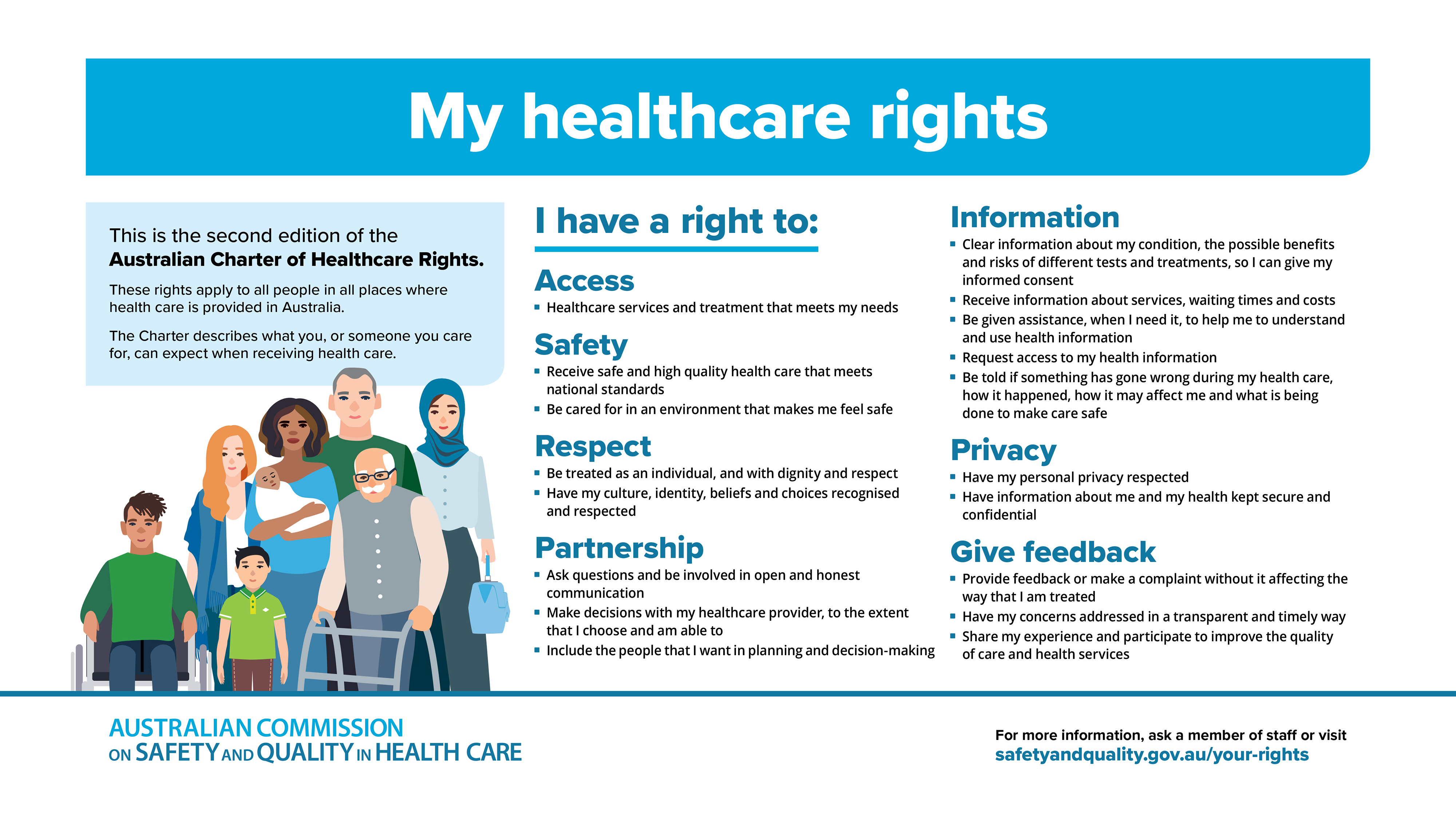National Safety and Quality Health Service (NSQHS) Standards
The NSQHS Standards were developed by the Commission in collaboration with the Australian Government, states and territories, private sector providers, clinical experts, patients and carers. The primary aims of the NSQHS Standards are to protect the public from harm and to improve the quality of health service provision. The NSQHS Standards provide a nationally consistent statement about the level of care consumers can expect from health services.
Clinical Governance StandardThe Clinical Governance Standard aims to ensure that a clinical governance framework is implemented to ensure that patients and consumers receive safe and high-quality health care. This standard aims to ensure that there are systems in place within health service organisations to maintain and improve the reliability, safety and quality of health care. This standard, together with the Partnering with Consumers |
|
Partnering with Consumers StandardThe Partnering with Consumers Standard aims to create health service organisations in which there are mutually beneficial outcomes by having:
The Partnering with Consumers Standard recognises the importance of involving patients in their own care and providing clear communication to patients. This standard, together with the Clinical Governance Standard, underpins all the other standards. Standard, set the overarching requirements for the effective implementation of all other standards. The Clinical Governance Standard recognises the importance of governance, leadership, culture, patient safety systems, clinical performance and the patient care environment in delivering high quality care. |
|
Preventing and Controlling Infections StandardTo reduce the risk to patients, consumers and members of the workforce of acquiring preventable infections; effectively manage infections, if they occur; prevent and contain antimicrobial resistance; promote appropriate prescribing and use of antimicrobials as part of antimicrobial stewardship; and promote appropriate and sustainable use of infection prevention and control resources. |
|
Medication Safety StandardThe Medication Safety Standard aims to ensure that clinicians safely prescribe, dispense and administer appropriate medicines, and monitor medicine use. It also aims to ensure that consumers are informed about medicines, and understand their own medicine needs and risks. |
|
Comprehensive Care StandardThe Comprehensive Care Standard aims to ensure that patients receive comprehensive health care that meets their individual needs, and considers the impact of their health issues on their life and wellbeing. It also aims to ensure that risks of harm for patients during health care are prevented and managed through targeted strategies. Comprehensive care is the coordinated delivery of the total health care required or requested by a patient. This care is aligned with the patient’s expressed goals of care and healthcare needs, considers the impact of the patient’s health issues on their life and wellbeing, and is clinically appropriate. The Comprehensive Care Standard integrates patient care processes to identify patient needs and prevent harm. It includes actions related to falls, pressure injuries, nutrition, mental health, cognitive impairment and end-of-life care. |
|
Communicating for Safety StandardThe Communicating for Safety Standard aims to ensure timely, purpose-driven and effective communication and documentation that support continuous, coordinated and safe care for patients. This standard recognises that effective communication is needed throughout patients’ care and identifies high-risk times when effective communication is critical. It describes the systems and processes to support effective communication at all transitions of care: when critical information emerges or changes; to ensure correct patient identification and procedure matching; and to ensure essential information is documented in the patient’s healthcare record. |
|
Recognising and Responding to Acute Deterioration StandardThe Recognising and Responding to Acute Deterioration Standard aims to ensure that a person's acute deterioration is recognised promptly and appropriate action is taken. Acute deterioration includes physiological changes, as well as acute changes in cognition and mental state. |
For further information on the NSQHS Standards, please see the link: The NSQHS Standards | Australian Commission on Safety and Quality in Health Care
Australian Charter of Healthcare Rights
The ACT Ambulance Service is governed by the principles of the Australian Commission on Safety and Quality in Healthcare and is committed to upholding the rights of consumers and community members.





